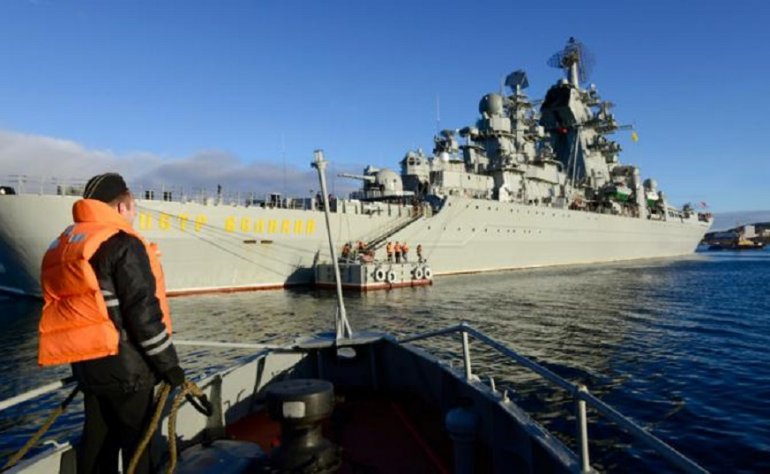Exclusively for SouthFront by J.Hawk
Russian Navy modernization plans include comprehensive upgrades to two Orlan-class nuclear-powered missile cruisers, Pyotr Velikiy and Admiral Lazarev, which will practically transform them into brand-new warships. While the ships’ “main battery” originally consisted of 20 Granit supersonic long-range anti-ship missiles, the upgrade will replace them with 80 UK-SK launch cells capable of launching a variety of weapons. In addition to the Oniks anti-ship missile and Kalibr cruise missile family, the cruisers will also carry the Tsirkon hypersonic anti-ship missile which is currently under development.
The Tsirkon has been under development for several years and reached speeds of up to Mach 4.5, which is nearly twice the speed achieved by the missiles currently in Russian Navy service, and even higher speeds are expected before the missile enters service around 2020. The modernization will also improve the ships’ long-, medium-, and short-range anti-aircraft capabilities (which will be boosted by installing the naval version of the S-500 system) and anti-submarine systems.
The two missile cruisers will serve as the backbone of Northern Fleet’s surface action groups which will be essential to protecting Russia’s rights and interests in the Arctic region. The Kalibr family of missiles will allow them to launch heavy cruise missile barrages from well outside the range of NATO tactical aircraft, while the Tsirkon will provide an anti-ship punch that can overcome even the most sophisticated anti-missile defenses. Since the Tsirkon can be launched from all UK-SK systems, even the small Buyan-M missile corvettes will be able to carry it.
The two ships will also be used as test-beds to evaluate the new weapon systems for future Russian ship classes, including the Primakov-class destroyers whose design is to be finalized in 2016 and which should enter service sometime during the next decade.




